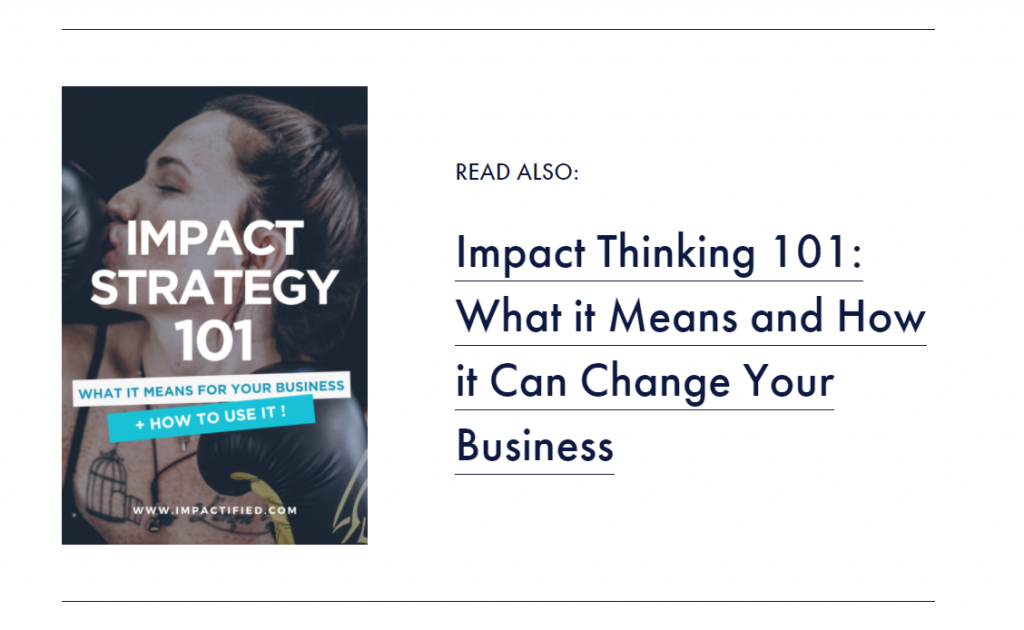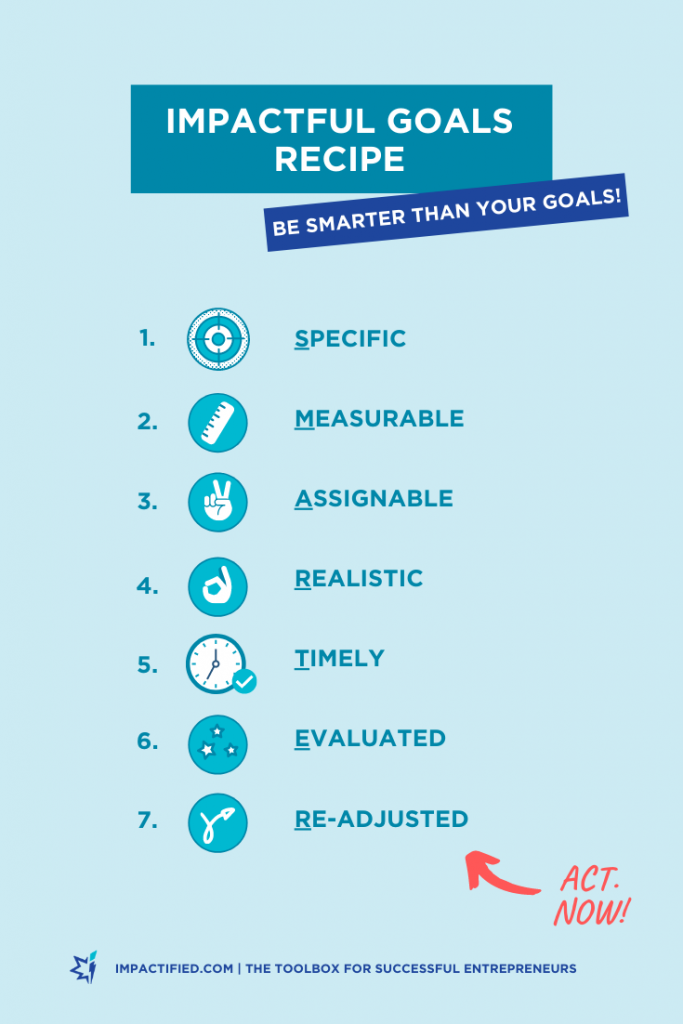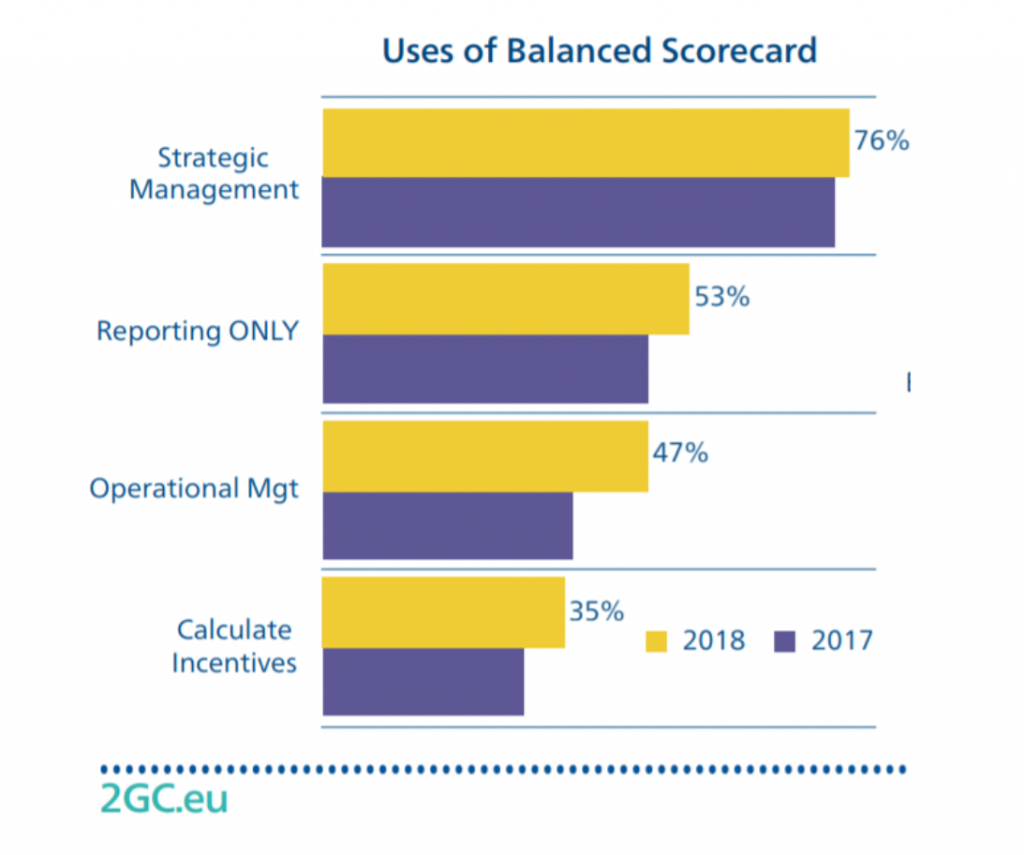A question often comes up during our goal management discussions with entrepreneurs, CEOs and executives: have you set any business goals for the year? Or for the next three months, perhaps? Most of the time, however, the answer is apologetic.
The question is difficult, truth be told, because most entrepreneurs don’t have time to invest in setting goals. Forward-thinking and anticipatory planning are resource-consuming, hence in most cases the daily routine and emergencies take over the need to plan and build a long-term strategy – which thus comes last.
Often, entrepreneurs push the business goal-setting exercise away on the ground that goals are little more than irrelevant fuss which doesn’t pay the bills.
Yet, in reality, goal setting is part of a longer game. In the same way planes and cruisers need a series of navigation coordinates to get to their terminus, businesses need a form of destination as well as a plan to get there. Which is precisely what goals are about.
At the same time, and let’s be painfully honest, the topic is often synonym to BS. Excuse our French here, but sometimes calling a cat a cat is important.
Have you ever tried running a workshop on goal management and SMARTER goals? We have, and we are affirmative: a major problem when you talk to people about the ‘importance of setting SMART goals or SMARTER goals’ is that the term sounds lame.
Some people smile, more or less politely. Some roll eyes. Others shrug and yawn. Most of the time, the topic doesn’t appear relevant to people, because it is abstract and in the realm of the optional that doesn’t matter.
Have a look online and see for yourself, many articles explore the topic and most have no interest whatsoever. The web has a lot to say on goals, setting goals and the like, but most of the time, the idea is that your goals should be SMART – understand Specific, Measurable, Achievable, Relevant and Timely. Or SMARTER, which also includes Evaluation and Review, or Record and Reward. It depends.
Most of the time, the articles give you a definition of what the SMART goal and SMARTER goal acronyms stand for. Which is great… but so what? How can you make something of the SMART fuss?
The key takeaways
In this business blog article, we explore the question of goal management, goal-setting and objectives more generally. And we dig much deeper than the usual goals-related comments you can find out there.
- First, we put things into context to give you a little bit of background as to what the SMART and SMARTER discussion really is about – That’s instructive, you’ll see.
- Second, we elaborate on the real deal behind the goals discussion and give you our homemade Impactified insights on how to be smarter than the usual goal discussion. Our secret recipe works because there is a trick…
- Third, we give you some examples of companies in which goal-focused strategies are being used and make a difference. And we give a last situation in which goal setting becomes important: investors!
Overall? Well, if you ask us, the point is not just to build SMARTER goals. It is to be SMARTER than the typical and pointless goal setting exercise. Shall we?
Background check: where the SMART goals come from.
The topic of SMART and SMARTER goals is used very frequently by advisers of all kinds, and on many websites – see for instance this TechRepublic article by Robert Bogue.
Mostly, savvy goal-setters play with the acronym, explain what a good goal should be like and get you bored with the same old ambition-lacking and purely descriptive story everyone likes to tell. As if the topic was new and revolutionary. But Que Nenni! Not at all!
In reality, the subject matter is far from new. For a few decades now, goals have been at the forefront of various corporate management methods, including strategic planning and the so-called ‘Management by Objectives’ (or MBO) where the SMART phenomenon originates from.
Business school break – the concept of ‘Management by Objectives’ was developed by Peter Drucker in 1954. In a book titled The Practice of Management, Drucker defined business strategy as a sequential process focused around goal definition, implementation and monitoring.
First, define the main goals to be targeted by an organization. Second, define how those will affect staff (in terms of conduct and objectives). Third, monitor. Then evaluate, and reward.
Another major reference in the field was George T. Doran, who published in November 1981 a very interesting foundation article in the Management Review in which he explored the importance of goals and objectives for managers and business development.
The academic meaning of SMART goals
The article was academic in essence, but it is also short and easy to read and has a lot to teach us. Its conclusion is that to define goals and objectives that make sense and are easy to implement, we “just have to think of the acronym SMART”. And, to him, SMART meant the following:
- Specific (because vague objectives leads nowhere)
- Measurable (because there is no assessment without measure)
- Assignable (an objective must be met by/with someone identified)
- Realistic (because the idea is not to be crazy)
- Timely (because no time limits mean no result within a reasonable timeframe)
Overtime, however, the meaning of SMART has changed as people have tweaked in one way or another to fulfil their goal management ambitions.
Specific and Measurable tend to remain the same, but Assignable usually becomes ‘Achievable’ (which however often gets interpreted as Realistic). In turn, Doran’s actual Realistic is often turned into Relevant.
Eventually, SMART goals turned into SMARTER goals: ‘E’ stood for Evaluation (of Doran’s Measurable criteria) or for Excitement depending on the sources, while ‘R’ stood as a mix of various concepts ranging from ‘Rewarded’ (celebrate!) to Recorded (okay…) or ‘Re-adjusted’ (much more convincing).
When SMART goals and SMARTER goals aren’t that Smart after all.
Said differently? Management by Objectives is a big basis for anything related to goals, goal-setting and business management. Particularly when it comes to SMART and SMARTER. Yet, the definitions are so broad and inconsistent that merely focusing on ticking boxes as defined by blog articles makes little sense.
At Impactified, we believe that all this means something very simple: the point is not to aim for SMARTER goals but to be much smarter about the way you approach goal-setting and goal management in general.
Building a project based on incoherent standards doesn’t create any value to you, but thinking carefully about why you need to set goals, and using those goals to build and implement a strategy makes a massive difference.
Think about it. What is the point of trying to set goals if you don’t have a long-term and holistic perspective on your business or project? Where will goals get you if you don’t have a much bigger picture in mind when setting them?
Business goals & big picture thinking.
As Doran put it in his article, business goals and objectives can have different roles in that they help with giving “a sense of direction” whilst at the same time helping to build a precise action plan.
At the institutional or entrepreneurial level, they can help to create an ideology and philosophy which can then drive the conduct and the operative mode of the company.
At Impactified, we call that Impact Thinking, and we believe that this step is the core of any strategy – way before talking about goals and about taking action.
At the operational level, and provided that the big picture is clear, Doran adds that defining objectives brings a more quantitative layer to the discussion.
He gives an example of what constitute a SMART objective, as a matter of fact: “develop and implement by December 31, 19_ an inventory system that will reduce inventory costs by $1 million, with a cost not to exceed 200 work hours and $15,000 out-of-pocket initial expenditures”.
Being smarter than just setting business goals.
So, the big deal is to be smarter than just setting goals for the sake of setting goals. The usual SMARTER articles out there don’t talk about this, but what really matters is to know where you want to go, and to organize your efforts accordingly.
At the end of the day, goal-setting without goal management and implementation is no more than wishful thinking, don’t you think?
So, here’s how we do it.
Step 1: Define your long-term objective.
Before you even consider building your actionable goals, set the scene. If your business plans on changing the world one way or another, define what Impact it will make.
If your big goal is to make a billion, be clear about it. If your purpose as a business is to eliminate single-use plastic or to send people to space, state it as loud as possible. If your organization is a charity, the same applies. Define your Impact, down the road, five to ten years from now, and stick with it.
Since you’re at it, think also about the obstacles on the way. Make a list of the various trouble you will probably face, you will be better equipped to anticipate, better allocate your resources, and maximize your Impact.
Step 2: Think about ‘who’ can help
The next step is to build a cartography of your ecosystem. Who, around you or around people you know, could be interested by whatever you are doing? Who could help talk about it? Who could help move it further? Who could help with funding?
We mentioned that goals should be Assignable, remember? Well, knowing who can help you one way or another is one very good way to define goals that get grounded in real life…
Step 3: List all the steps that actually need to be taken
Once you know what big result you want to reach and who could be involved, think about the steps that actually need to be taken.
Think in terms of strategy development (positioning, niche definition, message-building, etc.), but also in terms of marketing, public relations and sales development.
That’s where goal management really becomes goal management!
Again, make a list – and get in touch if you need help.
Step 4: Think about how you can validate the whole process
We get into the ‘ER’ part of the SMARTER approach here.
The idea isn’t explored that much on SMART blogs (see for instance here), but it is very much inspired from the ‘Lean’ approach to business and startup development according to which failing is part of the development process and which strongly suggests that you need to keep checking and adjusting permanently.
So, when drawing your big picture, think in terms of hypothesis. What could work? What could you test? How could you measure, quantify and test your hypotheses?
Step 5: Make sure your goals are impactful
Once you have a clear big picture of where you are heading and of what needs to be done, thinking about defining SMART Impactful business goals makes a lot of sense.
Take a piece of paper – or use our template! – and make a list of about four goals (not more) that you want to reach in three years. These are your goals for Year #3. Do the same, for next year – four goals again by the end of Year #2. And then the same again for the next twelve months, which is Year #1.
Each of those twelve business goals can now be defined with the SMARTER approach, but preferably the one inspired by Doran:
- Specific (because vague objectives lead nowhere)
- Measurable (because there is no assessment without measure)
- Assignable (an objective must be met by someone identified, or with someone)
- Realistic (because thinking big doesn’t mean being insane)
- Timely (because no time limit means no result within a reasonable timeframe)
- Evaluated (as part of the bigger picture)
- Re-adjusted (along the way, as things progress)
We usually add an eighth criteria: an Impactful business goal must be positive and constructive in essence. Call it self-conditioning if you will, but a negative goal won’t get you anywhere.
For instance? Becoming the leader in your field is more constructive than eliminating a competitor (destructive), and finding a nicer place to live by the end of the term is much more positive than planning to eliminate the neighbor’s yappy dog…
To make the goal setting and the goal management processes easier, here is a list of questions you can ask yourself:
- Is my goal aligned with my big picture and does it get me closer to my destination?
- Do I even have a big picture?
- If I don’t work alone, is there an alignment between my goals and everyone else’s?
- Is this goal worthwhile – compared to another – considering that I can’t do everything at once?
- Will this goal help me maximize resource allocation?
- Does my goal make sense from a time perspective?
The idea here is not to check the seven criteria (as noted by Doran himself, actually) but to get into a mindset in which every effort is coordinated, makes sense, and gets you closer to your ultimate destination.
The goal-focused model works.
The model may seem challenging, but we at Impactified use it on a daily basis with entrepreneurs managing turnovers ranging from a few hundred thousand dollars to several millions.
This type of business management based on goals is efficient for several reasons.
First, it helps people to focus on their real priorities and often gives them a good way to make an arbitrage between what needs to be done and the rest. When you decide that one specific priority should be preferred, you can normally determine why this priority is important (develop my sales, secure my business, build a strong strategy, etc.).
If something comes up and seems interesting but does not meet the annual plan, then it can be squeezed because … sorry, but we have priorities which cannot be set aside.
Second, and as a result, it genuinely helps with getting things going. Instead of losing time, people who use the model become more efficient and make progress in ways that they wouldn’t anticipate.
They plan, they follow-up, they execute as required by priorities.
They can also track what works and doesn’t work, which gives them an unprecedented ability to either move forward faster or pivot if things don’t work. It’s goal management made efficient and useful. It’s as simple as that really…
As we noted earlier, however, talking about the ‘importance of setting SMART or SMARTER goals’ usually sounds lame and pointless – if only because for many people goals are mostly a matter of New Year Syndrome management.
So, how does the goal approach work? What makes it useful? Well. The truth is, there is a trick.
The trick.
The big idea here is that there can be no efficient goal-setting exercise unless there is proper goal management in the form of follow-up and revision every now and then.
Hence, the trick is very straightforward: beyond setting your big goals, you want to build a strategic calendar which will help you determine i) what your next moves are going to be (priority actions) and ii) when these actions must take place.
Let us repeat this: beyond setting your big goals, you want to build a strategic calendar which will help you determine i) what your next moves are going to be (priority actions) and ii) when these actions must take place.
Here is the thing:
- A year is made of four quarters, which should all get you closer to your year goals.
- A quarter is made of thirteen weeks, which can be used to implement quarter tactics to get you to your year goals
- Therefore the best thing you can do is to build a strategic planning over the next thirteen weeks that helps you achieve quarterly priorities and gets your closer to your Year #1 goals.
- For instance, if your goal #1 for the year is about having an up-and-running website, one tactic could be to start building a website by taking actions A (week 1), B (week 2)and C (week 3) while another tactic could be to build a digital marketing strategy by taking actions D (week 2), E (week 3) and F (week 5).
- In turn, this means that your week 1 will be about implementing action A, while week 2 will be about Actions B and D, so forth and so on
- When Quarter 2 begins, more tactics would then be defined to keep implementing the annual goal, so forth and so on.
Again, if you need help with this, have a look at our Impactified solution, The quarterly Business Planner, it will help you with setting your goals AND putting an action plan into place to turn those goals into reality.
Ever heard of OKRs and Scorecards?
In case you wondered, this type of process is also in line with alternative MBO systems (Management by Objectives, remember?) known as OKRs (Objectives and Key Results) or Scorecards – which efficiency is bulletproof.
OKRs were promoted in the 1970’s and in Andy Grove’s book High Output Management (1983) as a means to institutionalize performance measurement and scoring within large institutions. As we explained in length already, the point is always to build a combination of objectives and action plans leading to quantifiable and measurable results in approximately 90 days (a quarter).
Large groups and entities such as Intel, Google or the Gates Foundation use this type of tool on a routinely basis, as a matter of fact, and in a foreword to John Doerr’s book Measure What Matters, Alphabet CEO Larry Page went as far as writing that “Objectives and Key Results have helped lead [Google] to 10x growth, many times over [and] helped make [their] crazily bold mission of ‘organizing the world information’ perhaps even achievable [by keeping him] and the rest of the company on time and on track when it mattered the most”.
Scorecards are another alternative in the Management by Objectives realm, largely used in large organizations where individual performances are not a matter of driving and setting directions but a matter of executing.
According to the last annual Scorecard survey published by 2GC, “the most common use for Balanced Scorecard is to implement organizational strategy” and “almost three quarters [of the survey participants] reported use [of scorecards] at the Executive level, and over half in functional management [whilst] use of Balanced Scorecard at board level was low (36%)”.
Goal Management is also relevant from an investor’s perspective.
It goes without saying, but beyond the management aspect, business goals are also extremely relevant from an investor and partnership perspective.
Those who meet investors, bankers and partners of all sorts on a regular basis know it, people who have stakes in your business want to know that the business goes in a set and sound direction.
Hence, a business in which no clear goal is defined will be weakened in the eyes of those who expect leadership and consistency. Worth keeping in mind, isn’t it?
The bottom Line: To be Impactful, be smarter than your goals…
The bottom line is, while goal setting feels like – and often is – a doubtful topic when taken out of the blue, putting a thoughtful approach to objectives and results into place makes sense and works.
OKRs and Scorecards work as institutionalized solutions in very large organizations, but adapted systems can be developed at the entrepreneurial level, for small and medium entrepreneurs.
All it takes is a willingness to try, obviously, and a determination to play the game thoroughly in the long term.
If you feel like going with the flow, as usual, works well enough, we wish you good luck. If you are interested to explore how to change the rules of the game in your business, our experts and our quarterly Business Planner are here to help!







